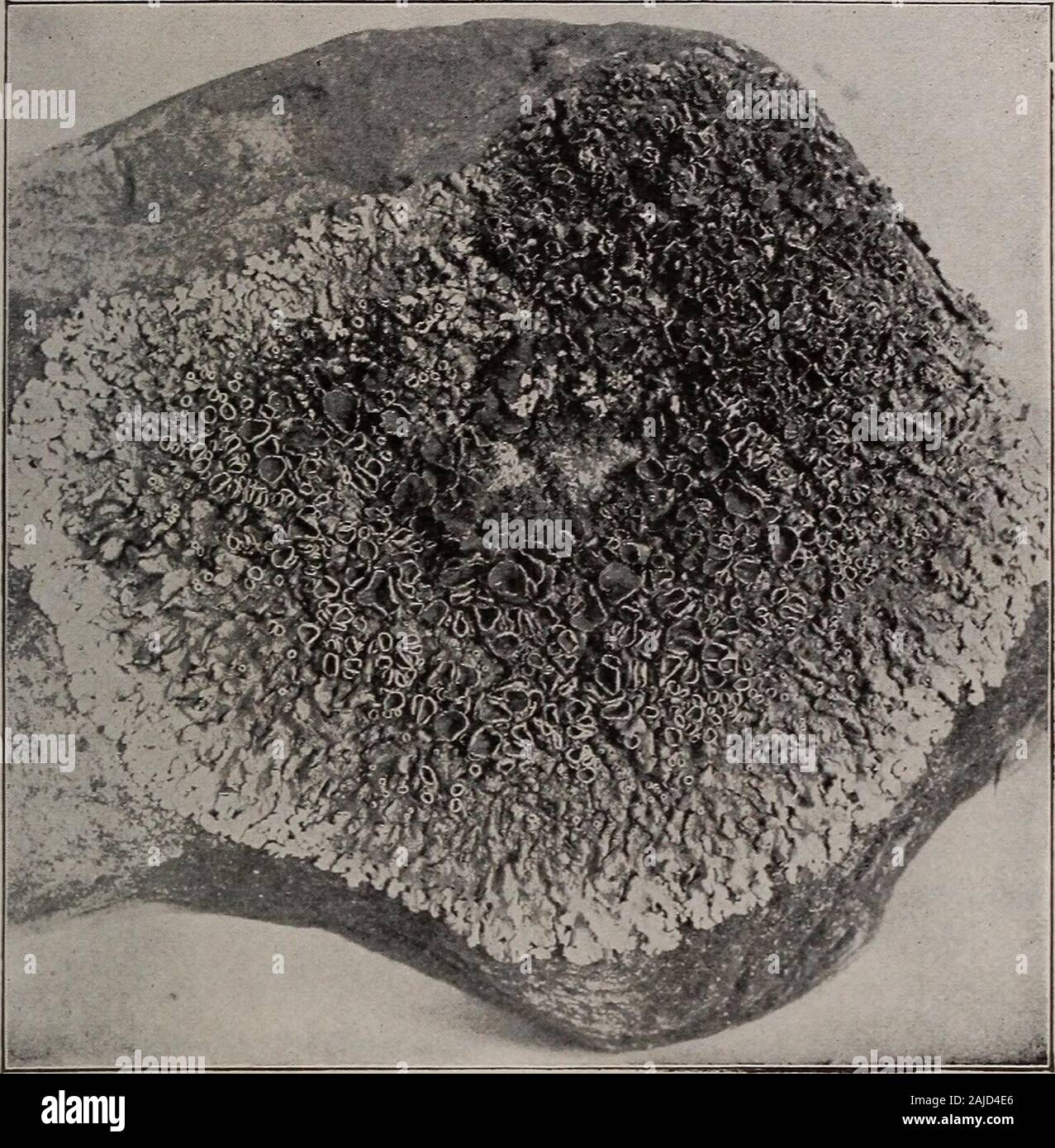Elementary botany . nomycetes). Gymnocarpous lichens (those with a fruit body like the Discomycetes).Hymenolichenes (those with a fruit body like the Hymenomycetes).Gasterolichenes (those with a fruit body like the Gasteromycetes). From a vegetative standpoint there are two types according to the dis-tribution of the elements. 1 st. Where the fungal and algal elements are evenly distributed in theplant body the lichen is said to be homoiomerous. There are two types ofthese: a. Filamentous lichens, example, Ephebe pubescens. b. Gelatinous lichens, example, Collema (with the alga nostoc), Physma

Image details
Contributor:
The Reading Room / Alamy Stock PhotoImage ID:
2AJD4E6File size:
7.1 MB (548.6 KB Compressed download)Releases:
Model - no | Property - noDo I need a release?Dimensions:
1566 x 1594 px | 26.5 x 27 cm | 10.4 x 10.6 inches | 150dpiMore information:
This image is a public domain image, which means either that copyright has expired in the image or the copyright holder has waived their copyright. Alamy charges you a fee for access to the high resolution copy of the image.
This image could have imperfections as it’s either historical or reportage.
Elementary botany . nomycetes). Gymnocarpous lichens (those with a fruit body like the Discomycetes).Hymenolichenes (those with a fruit body like the Hymenomycetes).Gasterolichenes (those with a fruit body like the Gasteromycetes). From a vegetative standpoint there are two types according to the dis-tribution of the elements. 1 st. Where the fungal and algal elements are evenly distributed in theplant body the lichen is said to be homoiomerous. There are two types ofthese: a. Filamentous lichens, example, Ephebe pubescens. b. Gelatinous lichens, example, Collema (with the alga nostoc), Physma(with the Chroococcacese). 2d. Where the elements are stratified, as in Parmelia, etc., the lichen issaid to be heteromerous. In these there are three types: a. Crustaceous lichens, the plant body is in the form of a thin incrusta-tion on rocks, etc. FUNGI CONTINUED: CLASSIFICATION. 221 b. Foliaceous lichens, the plant body is leaflike and lobed and more or lessloosely attached by rhizoids: Parmelia, Peltigera, etc.. Fig. 251a.Rock lichen (Parmelia contigua). c. Fruticose lichens, the plant body is filamentous or band-like andbranched, as in Usnea, Cladonia, etc. CHAPTER XXIII. LIVERWORTS (HEPATICyE). 473. We come now to the study of representatives of anothergroup of plants, a few of which we examined in studying the organsof assimilation and nutrition. I refer to what are called the liver-worts. Two of these liverworts belonging to the genus ricciaare illustrated in figs. 30, 252. Riccia. 474. Form of the floating riccia (R. fluitans).—The gen-eral form of floating riccia is that of a narrow, irregular, flattened, ribbon-like object, which forks repeatedly, in a dichotomousmanner, so that there are several lobes to a single plant. Itreceives its name from the fact that at certain seasons of the yearit may be found floating on the water of pools or lakes. Whenthe water lowers it comes to rest on the damp soil, and rhizoidsare developed from the under side. Now the sexual orga